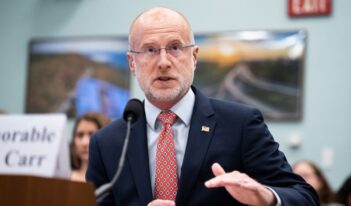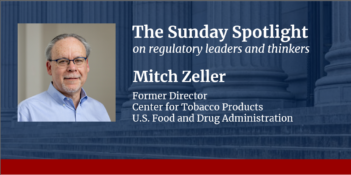
The FCC’s position on internet access will continue to change unless Congress passes clear legislation.
As a result of the recent U.S. Court of Appeals for the D.C. Circuit’s decision in Mozilla v. Federal Communication Commission, the rubber ball has come bouncing back to me!
In a February 2018 essay in The Regulatory Review on Chevron deference and the Federal Communications Commission’s (FCC) net neutrality rule, I invoked Bobby Vee’s 1960 hit song, Rubber Ball. That song’s sprightly refrain, “rubber ball, I come bouncin’ back to you,” called to mind the long saga of back-and-forth regulatory treatment of internet access regulation, popularly known as net neutrality.
In December 2017, the Trump Administration’s FCC in its Restoring Internet Freedom Order held that internet access services, according to the regulatory definitions contained in the Communications Act, are properly classified as “information services.” This reversed the Obama Administration FCC’s February 2015 determination that, according to the Communications Act’s definitions, internet access services are “telecommunications services.” This, in turn, reversed the Bush FCC’s 2002 determination that internet access services are “information services,” not “telecommunications services,” a determination the U.S. Supreme Court affirmed in 2005 in a 5-4 decision in National Cable & Telecommunications Association v. Brand X Internet Services.
If you did not already know, you probably have figured out by now that, in the long running net neutrality saga, the regulatory classification of internet services has mattered greatly. Although “telecommunications services” are subject to public utility-like common carrier regulation, “information services” are subject only to so-called light-touch regulatory treatment. The Trump Administration’s FCC’s Restoring Internet Freedom Order overturned the Obama Administration FCC’s stringent net neutrality regulations that, in effect, imposed public utility mandates on internet service providers.
As I acknowledged in my earlier essay, I have long favored light-touch regulation of internet services providers. That is why, this time, the “rubber ball has come bouncin’ back to me.”
But what is going on here with the FCC and net neutrality regulation? Pretty simple. We are witnessing an example of uber-Chevron deference—or Chevron out-Chevroning Chevron.
Under the Supreme Court’s 1984 decision in Chevron U.S.A., Inc. v. Natural Resources Defense Council, Inc., if a court reviewing an agency action determines that a statute is ambiguous, then it must defer to the agency’s statutory interpretation so long as it is reasonable. In National Cable & Telecommunications Ass’n v. Brand X Internet Services, the Supreme Court held that the Communications Act’s definitions of “information services” and “telecommunications services” are ambiguous, so, applying the Chevron deference rule, it affirmed the FCC’s 2002 determination that internet services are reasonably classified as information services subject to light touch regulation.
When the D.C. Circuit affirmed the Obama Administration FCC’s changed regulatory classification in United States Telecom Association v. FCC in June 2016, it relied primarily on Chevron deference as applied in the Brand X decision. And it should not be surprising that when the D.C. Circuit, in its recent per curiam decision in Mozilla, affirmed the Trump Administration FCC’s return to the information service classification, it deemed itself bound by Brand X’s holding that the statute’s ambiguity required that it defer under Chevron to the agency’s interpretation. Indeed, at the outset of its discussion of the classification issue, the Mozilla opinion declared that “we view Brand X as binding precedent in this case.”
So, where do we go from here?
It is certainly not difficult to imagine that, just as in the 1993 movie Groundhog Day, we will be forced to relive, if not the same day, the same back-and-forth regulatory classification over and over again. Few people doubt that if a Democrat controls the White House after the 2020 election, when the composition of the FCC changes, the new majority will reverse the Restoring Internet Freedom Order. And if this happens—that is, if the ball bounces the other way again—there is little reason, absent the Supreme Court curtailing the Chevron deference doctrine as I have suggested, to suppose that the D.C. Circuit will not once again affirm the agency’s switcheroo.
Of course, you do not have to be a policy guru to appreciate that this unending back-and-forth and the uncertainty created by potential regulatory zigzagging is not conducive to maximizing investment and innovation in a key segment of the country’s economy. I happen to favor the current light-touch regulatory regime which the Mozilla court has just affirmed. Given the current technological dynamism and competitiveness in the internet services marketplace, in my opinion, reinstatement of public utility-like regulation of internet providers would be a serious mistake.
But be that as it may, I agree with Judge Patricia Millett’s sentiment that in light of today’s technological and marketplace “realities”—as opposed to those that existed in 2005 when Brand X was decided—Congress should consider stepping “up to the legislative plate.” Indeed, I ended my February 2018 essay by saying that it “is time for Congress to end the FCC’s net neutrality saga and legislate unambiguously.”
With yet another bounce of the net neutrality ball, this is even more true today. Congress should do its job and establish the fundamental policy governing the conduct of internet service providers in the digital age.




